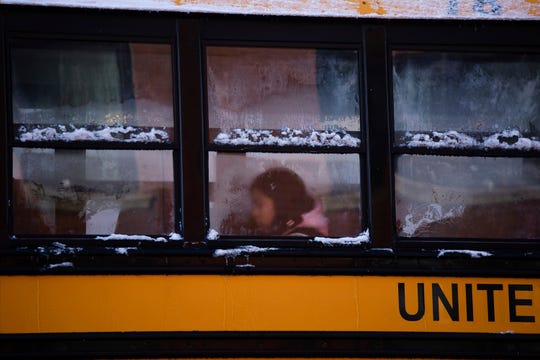I sit cross-legged on the scuffed gym floor in a public elementary school in Springfield, Massachusetts. It is a Tuesday afternoon, and I have just arrived, ready to begin my regular volunteer shift—I visit the second-grade classroom once a week to provide academic support to students through a volunteer program at my college. As I wait for the students to finish their P.E. period and head back into their classroom to begin math work, one child—I will call her Valerie—breaks off from her peers, who are coasting across the room on small, multi-colored scooters, and sits down next to me. I have known Valerie for a few months now and we greet each other with friendly smiles. I ask her how she has been since I last saw her a week ago, expecting a quick “Good!” or a short story about her weekend activities. Instead she proceeds to share with me the news of a close family member’s death.Valerie launches quickly into a lengthy description of this loss—the details of how it happened, the deep sadness it is bringing to her and the rest of her family members. The death was completely unexpected and had only occurred a few days before. She speaks quickly, pushing the words out of her as though they have been lodged there—stuck—for quite some time. As I listen to her, I begin asking myself some questions: Am I the first adult at school she has told about this? Is there a social worker or counselor here Valerie can access?
This conversation happened nearly a year ago, and these questions still plague me. Valerie’s teacher was in charge of around thirty second-graders and so could not provide her with undivided attention. After researching the staff, I came to the conclusion that the school does not have a designated counselor or social worker. Valerie, then, had to rely on a volunteer who only comes into the school for two hours once a week, an adult who is not trained to work with kids on making sense of death, loss, and the complicated sadness that accompanies these. While I did not mind (in the slightest) sitting with and listening to this student in her time of need, I recognized then—and now—that Valerie deserves access to an adult who is educated on how to have difficult conversations with kids and who is present at the school for many more hours each week than I was.
Lack of support for students dealing with personal crises, family-related issues, and mental health struggles is unfortunately the norm in most U.S. public schools. In fact, only three states meet the recommended ratio of students to social workers in their public schools—250:1—and these only by a small margin. In some states, the ratio is more than double what is recommended. There are suggestions, as well, that the recommended ratio should be even lower when social workers are supporting students with “intensive needs.”
Social workers can engage with students and families in a variety of ways. Social workers are trained to work one-on-one with students who need mental health support—they may assist students in moving through personal crises, help them develop social and emotional skills, or create behavioral intervention strategies. Social workers can also engage with parents and caregivers of students who are struggling, providing advice on how to best support a student’s growth at home or that student’s adjustment to the school. They can provide direct support to teachers and assist in developing larger school programs that target mental health or social and emotional learning. These are only some of the tasks a school social worker may take on; for a more comprehensive list, refer to this guide by the School Social Work Association of America.
The consequences of the lack of social workers and other trained mental health professionals in schools can be devastating. The Center for Disease Control recently released a study that shows rising suicide rates for young people; between 2007 and 2017, the suicide rate for people between 10 and 24 increased by 56%. Rhitu Chatterjee, a reporter for NPR, shared, “For the youngest group, the 10- to 14-year-olds, the rate had nearly tripled to about 500 suicide deaths in 2017.” This rise in suicide rates is accompanied by a rise in anxiety and depression. In addition to the rise in mental health issues, students must attend school each day with the knowledge that gun violence is becoming increasingly frequent in schools. Many students must return to school after having experienced gun violence first-hand.
Some school districts are demanding that more social workers be hired. The recent teachers’ strike in Chicago was not all about raising teachers’ pay; educators and allies also demanded that Chicago Public Schools be equipped with enough social workers to meet the recommended ratio. The ratio in the district is currently 555:1, far above what is recommended. These demands were met in a recent contract; the district committed to employing 680 school social workers by June of 2023. As of January of 2020, the district was employing 90 more social workers than at that time last year.
Striking and other forms of active protest shed light on the lack of mental health and social/emotional support in schools—as is clear from the example above, engagement in this kind of resistance leads to positive change. Teachers and other educators, parents and caregivers, students, and social workers themselves can demand change via these forms of resistance, as well as through petitions and social media. Visit the School Social Work Association of America’s “Resources for Advocacy” page to learn how to take action and best support school social workers. Progress is possible—not only possible, but crucial to the well-being of countless students.
About the author: Chloe Ford is a senior at Smith College, majoring in Education & Child Study. She hopes to do counseling/social work with elementary-aged children in the future.
